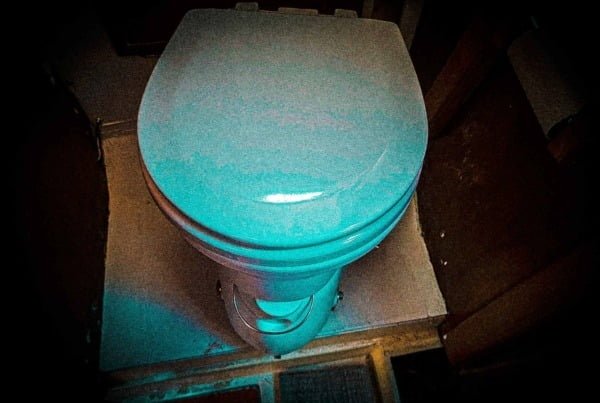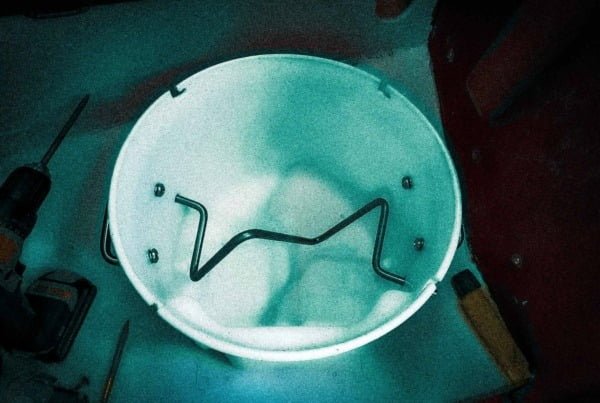No, taking a chest is not piracy!
In addition to offering berths, it very often happens that marinas offer mooring spaces. That is to say, it is possible to use a mooring buoy to tie up your boat. This buoy is safer than a conventional mooring (with the anchor) since it is attached to a mooring: a large block of concrete weighing several hundred kilos. The buoy floats on the surface of the water and mooring cables are available on the buoy. Sometimes you have to use your own.
There are several advantages to using a mooring buoy, but also a few small disadvantages:
- No need for anchor, just hang on
- Usually sheltered from the elements
- Allows more privacy than at a dock
- Not as well protected as at a dock
- Must have a dingy to go ashore
- No water or electricity service
For my part, it was the first time that I used a mooring (mooring buoy). I must admit that in bad weather or in the current rising or falling under the bridges of Quebec, it is not so easy to do alone …!
In fact, I am currently at the Chaudière River marina, located very close, downstream, from the Quebec Bridge. And exactly 12 minutes from my home! The currents are strong under the bridges, that too is a new experience for me. I discovered that it is very different than making circles in the river in front of the city of Sorel, as I did in 2019 and that I would have liked to do in 2020 if my season had not been shortened by my accident.
So I continue my learning to sail. Knowing the thousands of little details will undoubtedly make me a better captain and prepare me for a possible crossing of the Atlantic.
How to take a mooring?
I don’t have much experience on how to tie up to a mooring buoy. But here is still, I believe, the right way to do it. If it helps you, so much the better!
You will need a pole (gaff) and also gloves.
Analyze the situation well for the first few times. Examining the direction of the current, its strength and going around the buoy to position yourself well would be the first advice I can give you.
Here are the steps to take a chest as safely as possible, solo:
- Position the bow (front) of the boat facing the wind / current, towards the buoy
- Proceed directly on the buoy leaving a small distance between the buoy and the edge of the boat
- Continue to move forward, slowly, until the buoy (but especially the cables) is easily accessible from the cockpit. Do not go beyond the cockpit entrance to prevent the cables from getting caught in the engine propeller.
- Depending on the wind and current, it may be helpful to leave the transmission engaged and engine speed adjusted to the situation. This will allow the boat to stay facing the current without backing up too much. Make sure that it is achievable and most importantly, make sure that the speed is slightly lower than the current. What we want to avoid is going too far towards the buoy.
- Grab, with a gaff, the small buoy that allows the mooring cables to float on the surface
- Grasp one of the mooring cables (the use of gloves can be very helpful).
- Return the engine to neutral and move quickly forward to hook the first cable to a cleat and secure the boat. This should be done quickly, but without rushing to avoid falling or injuring yourself, but still fast enough to prevent the boat from rolling back out of range of the buoy. This is the most critical operation.
- Reassemble the second cable and also attach it to the other cleat.
- Fiou! We can relax now.

Voilà! Hope you enjoyed this article ?!
- If so, feel free to share it. It helps me with Google SEO and it doesn’t cost you anything.
- Also, you can subscribe to my private list, by entering your email address and your first name, at the bottom of this page. That way, you’ll be notified when I publish a new article!
- And finally, your opinion / comment is welcome!





